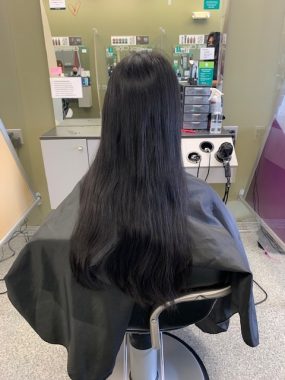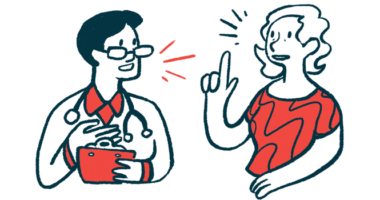We Have Found Accommodations That Make Life Easier for Our Daughter

As the mom of a 16-year-old daughter with a rare disease, I’ve had to learn how to accommodate Grace’s limitations. Many daily activities became much harder after she was diagnosed with Lambert-Eaton myasthenic syndrome (LEMS). My goal is to make her life with LEMS as easy as possible, so I began researching how to do just that.
Grace’s biggest hurdle was her inability to walk very far. Walking from the parking lot to the grocery store would tire her out for the rest of the day. Also, I noticed she would get very nervous if we went somewhere and she did not know how much walking would be required.
Of course, we have a walker and wheelchair on hand for big outings, such as Disney World or the airport. But on a daily basis, we made sure we had a plan in place so she could be dropped off at the door. Or, at the very least, we would assure her ahead of time that she would not have to walk very far.
Obtaining a disabled person parking permit was a simple procedure, and it gave Grace confidence that we would be able to park close to our destination. Now, she knows she will not have to walk very far when venturing out.
The second area I saw Grace struggling in, which was much less noticeable, was caring for her own hair. Grace had beautiful, long hair, and I noticed she was unable to keep it as clean as she did before she got sick. After talking with her, I realized her arms would get extremely tired as she washed her hair. We did a few things to combat this problem.

Grace’s hair before cutting and donating it. (Photo by Lori Dunham)
She suggested cutting her hair and donating it to an organization that provides wigs for children with cancer. This made her feel like it was going to a good cause. Since then, it’s been much easier to keep her hair clean.
We also bought her a gadget that helps massage the shampoo into her scalp. Lastly, I found a salon close to home that would wash and blow-dry her hair for $5. We do this occasionally to give her a good washing.
Grace goes to high school twice a week. We have found a wonderfully compact community that is able to accommodate her with elevators. She needed help carrying all her books, so we looked for a way she could carry them independently without using a traditional backpack. Rolling backpacks, crates, and carts were all good options. This made going to school possible for Grace.
One thing we have been unable to get for Grace is a self-elevating bed, but we hope to do so in the future. By the time Grace wakes up in the morning, her medicine has completely worn off, as her last dose was at 6 p.m. the previous night. Once this happens, she is unable to sit up on her own, making it impossible to get out of bed. I usually help her sit up enough in the morning to take her medicine. She lies back down and waits about 20 minutes for it to kick in.
Having a self-raising bed would allow her to sit up on her own to take her meds. This would be life-changing and give her the freedom to someday live alone or go away to college.
All of these accommodations are just part of our new normal as we help our daughter live with a rare disease. We are so grateful we live in a day and age when people with disabilities can find the accommodations they need in order to live fulfilling, successful lives.
***
Note: Lambert-Eaton News is strictly a news and information website about the disease. It does not provide medical advice, diagnosis, or treatment. This content is not intended to be a substitute for professional medical advice, diagnosis, or treatment. Always seek the advice of your physician or other qualified health provider with any questions you may have regarding a medical condition. Never disregard professional medical advice or delay in seeking it because of something you have read on this website. The opinions expressed in this column are not those of Lambert-Eaton News or its parent company, Bionews, and are intended to spark discussion about issues pertaining to Lambert-Eaton myasthenia.







Leave a comment
Fill in the required fields to post. Your email address will not be published.